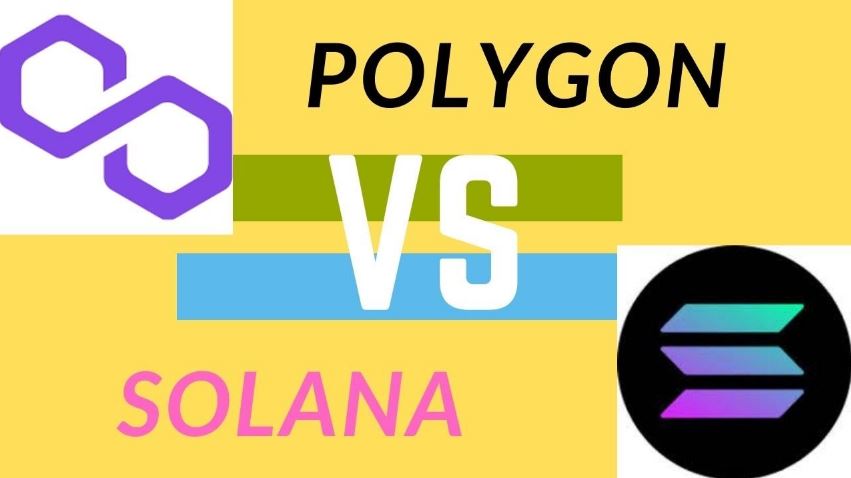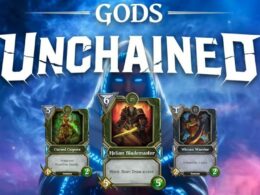* Polygon vs Solana are two of the biggest blockchain seeking to replace Ethereum.
No one could have predicted how many cryptocurrencies would emerge after Bitcoin and how blockchain technology would transform the world today.
Blockchain’s primary objective is to secure digital information in a tamper-proof manner. .
As the demand for blockchain-based solutions grows, so does the need for blockchain platforms to produce those solutions. Ethereum was the original smart-contract blockchain, but it is now showing its age.
Polygon and Solana are 2 newer blockchains that solve some of the problems associated with Ethereum.
Both are vying to be the defactor Web3 blockchains.
With Play to Earn (P2E) games being a major part of the Metaverse and Web3, how do these two compare? Let’s find out.
Polygon vs Solana: Marketplace Availability
The NFT market is quickly expanding. Many investors are still undecided about which blockchain is best for the NFT business.
Matic was the original name for Polygon. The Polygon marketplace intends to bring Ethereum-compatible blockchain networks together and develop them.
Through Matic, NFT holders will be able to use the Ethereum platform’s numerous functionalities.
When it comes to minting your NFTs effectively, Polygon permits the operation outside of Ethereum’s network.
This guarantees that transaction fees are minimal and that processing speeds are fast, allowing users to deploy other crypto assets into Ethereum swiftly.
The platform marketplace also addresses Ethereum’s inherent and structural issues, including inadequate throughput, a bad user experience, and a lack of sovereignty.
Some of the best market places for NFT include OpenSea, Refinable, NFTrade, tofuNFT Treasureland, etc.
Switching quickly to solana, the NFT’s sales have surged in significant numbers, although it is still in its infancy.
Solana is a decentralized ecosystem based on the Proof of Stake Consensus Algorithm, designed to handle 1,000 transactions per second and overcome scalability difficulties.
It allows for creating NFT Marketplaces and Dapps, Smart Contracts, and other crypto initiatives.
Creating an NFT Marketplace on the Solana Blockchain with solid security measures that support successful purchasing, selling, and listing NFT in all domains, such as art, sports, music, gaming, and so on, is part of the Solana NFT marketplace development.
SupaDrop, exchange.art, Magic Eden Solanart, and others are among the top Solana market spots.
Polygon vs Solana: Tokens (MATIC, SOL)
Polygon is a cryptocurrency with the symbol MATIC launched in 2017 and is also a technological platform that allows blockchain networks to connect and expand.
MATIC is an Ethereum-based digital currency that is interoperable with other ERC-20 tokens. MATIC manages, secures, and pays network transaction fees on the Polygon network.
Because the Polygon network uses a Proof-of-Stake (PoS) consensus process, you can earn MATIC tokens by staking your tokens there.
The token has a 10 billion MATIC fixed supply, with 6.29 billion MATIC in circulation.
As Ethereum users seek alternative platforms with quicker and cheaper transactions, Solana (SOL) has grown in popularity in the NFT and DeFi areas.
There are presently 315,100,273 SOL coins in circulation, with 511,616,946 coins available without a set limit.
There are two applications for the SOL token. The first is staking, in which token holders stake their SOL in exchange for incentives.
The other lets users pay for fees related to smart contract execution or other transactions using SOL.
Polygon vs Solana: Blockchain Robustness and Capacity
Polygon is a Layer-2 scaling solution designed to assist the Ethereum platform in achieving mainstream adoption.
The single side chain of the Polygon network has a scalable capacity of over 65,000 transactions per second in real-time.
Because of its speed and low transaction fees, Solana presently has a potential peak capacity of 65,000 transactions per second and has become one of the most widely utilized blockchains today.
Solana differs from Polygon as it allows consensus to be created among the nodes. To become a chain member, nodes must vote on the legality of blocks and transactions.
Polygon vs Solana: Game Selection
Polygon and Solana continue to be the best blockchain platforms at writing, particularly with their engaging projects.
Solana has a broader community that supports a wide range of novelties, such as Avatar trade, art, gaming, and Solchicks.
These projects, such as Genopets, Star Atlas, Space Falcon, Project Seeds, Defi Land, and many more, draw thousands of play-to-earn fans every month because of their outstanding visuals and intense gameplay.
Polygon is staking $DG tokens and spending an undisclosed amount of money in Decentral Games.
NFTs, play-to-earn models, wager-based games, and 3D virtual events games centered on music entertainment with immersive experience are among the games.
Crazy Defense Heroes, Pegaxy, Sunflower Farmers, and REVV Racing from Animoca Brands are among the most popular P2E games on the polygon platform.
Conclusion – Which is better
Depending on the user’s objectives, both Polygon and Solana offer benefits. When it comes to deciding which platform is ideal for you as far as P2E is concerned.
Polygon has an advantage since it uses sidechains to link blockchains and decentralized apps to Ethereum.
On the other hand, Solana has reached economies of scale with billions of users on board, lowering application prices to less than $.01.
We recommend that you do your own research before investing in any of them in terms of token investments.










